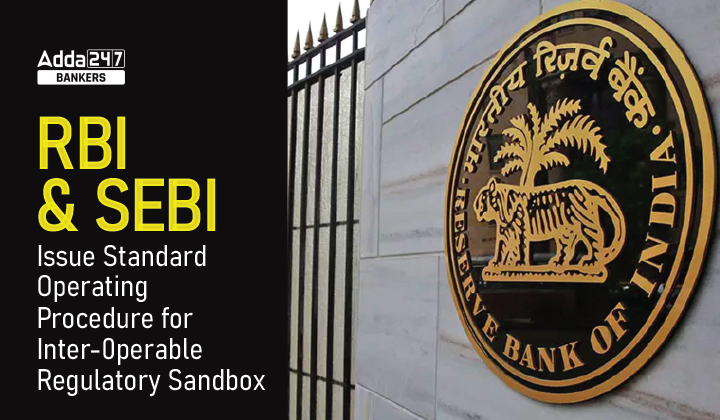Table of Contents
RBI and SEBI Issue Standard Operating Procedure for Inter-operable Regulatory Sandbox: In an effort to promote testing of new products that fall within the regulatory purview of many financial sector regulators, SEBI released a standard operating procedure for an inter-operable regulatory sandbox (IoRS). Inter-operable regulatory sandbox testing will be given consideration for financial products or service providers whose business models fall under the purview of more than one financial sector regulator, such as RBI, SEBI, IRDAI (Insurance Regulatory and Development Authority of India), PFRDA (Pension Fund Regulatory & Development Authority), and IFSCA (International Financial Services Centres Authority). This action may open the door for a number of new hybrid financial products with elements of pensions, capital markets, insurance, and deposits.
What is Inter-operable Regulatory Sandbox?
- The inter-regulatory technical group (IRTG) on fin-tech has developed IoRS. The group was established under the supervision of the Financial Stability and Development Council-Sub Committee (FSDC-SC). The group also includes representatives from the department of economic affairs, ministry of finance, and ministry of electronics and information technology in addition to the members from the financial sector regulators. It is a common window that has been made available to eliminate the need for innovators to interact with various regulators regarding their hybrid product.
- The RBI’s fin-tech division will serve as the coordinating group for IoRS and serve as the nodal point for receiving applications under the procedure. They will offer the necessary secretarial assistance. IoRS applications must be submitted in a predetermined application form on a “on tap basis.”
- According to the framework, the dominant feature of the product will determine the influence of the regulator. The principle regulator (PR), who has jurisdiction over this feature, and other regulators, known as associate regulators (ARs), will be responsible for this influence. To determine the dominating feature, two sets of factors would be taken into account. The type of enhancements to already-existing goods, such as loans, deposits, capital market instruments, insurance, G-Sec instruments, pension products, etc., and the quantity of relaxations the company requests in order to conduct the IoRS test.
What do you mean by Regulatory Sandbox?
A regulatory sandbox is a framework created by a regulator that enables FinTech companies and other innovators to carry out real-world experiments in a monitored setting. The RBI’s regulatory sandbox architecture defines a learning by doing strategy for all ecosystem actors. The regulation allows start-ups/Fintechs/tech companies/banks to innovate their products with specific safeguards.
About RBI
- The Indian banking system is governed by the Reserve Bank of India, which also serves as the country’s central bank and regulatory agency.
- It is owned by the Ministry of Finance, Government of India.
- It began operations on April 1, 1935, in compliance with the Reserve Bank of India Act, 1934.
- Governor: Shaktikanta Das
- Founded: 1 April 1935
About SEBI
- The Securities and Exchange Board of India (SEBI), which is owned by the Indian government’s Ministry of Finance, oversees the country’s securities and commodity markets.
- It was founded on 12 April 1988 as an executive body, and on 30 January 1992, the SEBI Act, 1992, granted it legislative authority.
- Headquarters: Mumbai




 28th March 2025 Current Affairs | Daily ...
28th March 2025 Current Affairs | Daily ...
 27th March 2025 Current Affairs | Daily ...
27th March 2025 Current Affairs | Daily ...
 26th March 2025 Current Affairs | Daily ...
26th March 2025 Current Affairs | Daily ...







